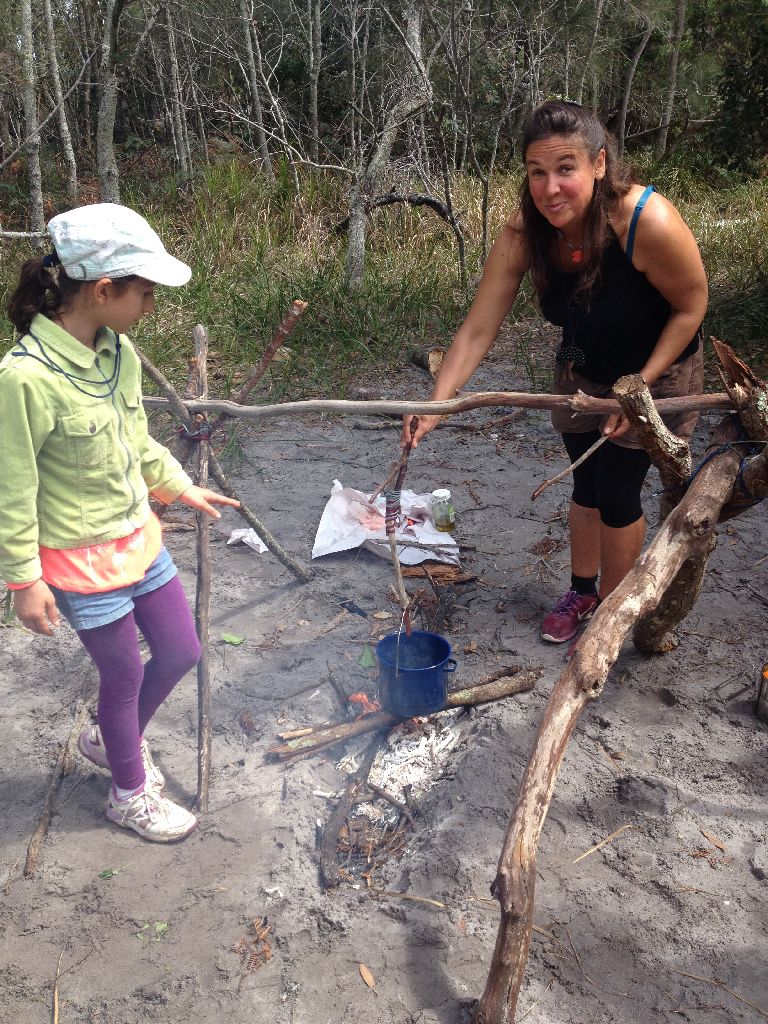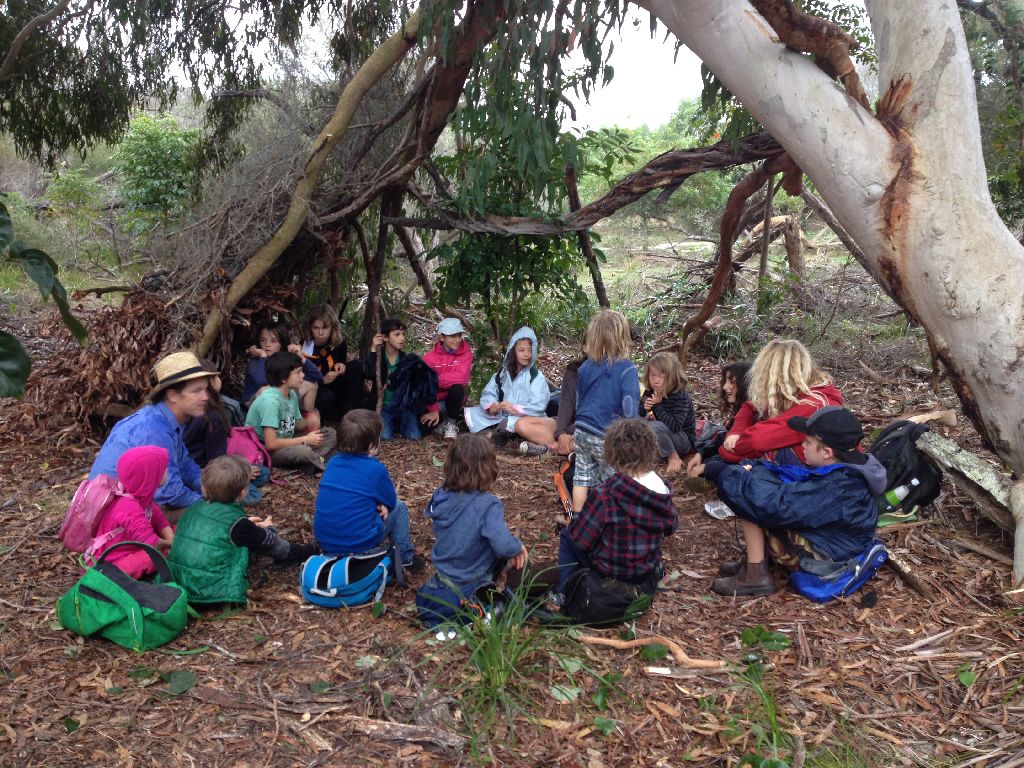Approach
Our creative mentoring approach honors individuality, encourages self-sufficiency in learning, and awakens a kinship with nature. It trains youth to blend the awareness of a native tracker with the knowledge of a modern naturalist. Our program draws on traditions from indigenous cultures world-wide, emphasizing nature as teacher, and offering skills development, ecological knowledge, and awareness practices that inspire and empower children to continue their learning adventure beyond the program and into the landscape of their lives.
Coyote Mentoring is the name given to our facilitators creative mentoring approach. It is a distinctive and highly effective nature-based educational approach developed by Jon Young and Wilderness Awareness School.

Various practices and creative tools are utilized by our mentors to support both of these processes, including Core Routines, Invisible Teaching, the Art of Questioning, and Trickster/Transformer.
Core Routines
Core Routines are disciplines for learning nature that are routinely practiced to cultivate sensory awareness and a way of being in and with nature. Indigenous cultures worldwide make use of them, and they seem to be almost instinctual to humans. The respectful qualities inherent to these routines translate easily to perceptive ways of being with one another. There are numerous core routines utilized in our youth program including Sit Spot, Fox Walk, Owl Eyes, Thanksgiving, Story of the Day, Field Mapping and more.
Invisible Teaching
Invisible teaching is the art of connecting with the child’s passions, and using those forms to carry the specific learning that the instructors wish to convey. Often, games are used to convey the core routines. For example, any games that convince a child to be still and silent in one place for a long (for them) period of time, such as hunting and sneaking games, helps build the capacity to be at one’s Sit Spot for progressively longer periods of time, with full sensory awareness. With games and other forms, an instructor passes on knowledge, and opens a line of wondering and thinking that is completely invisible to the child. The child doesn’t know he or she has learned anything, but by the end of the program they have developed capacities and learned a quantity of material in a way that has spoken individually to them.
Art of Questioning
The Art of Questioning is a teaching style that leads the student on a path of discovery. Starting with shared curiosity, the instructor offers a series of questions that serve to focus perceptions. For example: The instructor notices a child watching a robin. He might say, “I wonder why that bird is tipping its head to one side each time it takes a few steps? What do you think?” By musing over possibilities and further questions the instructor and child work together to interpret their observations. The Art of Questioning follows a trail that hones in on the areas where the child feels confident and knowledgeable, and moves outward to stretch perceptions, and works to create a ‘need to know’ in the child—a drive to find out more. The answers themselves are less important than the process of wondering, the array of ideas explored, and the comparisons and contrasts made.
Trickster/Transformer
The “Trickster” embodies surprise, mystery, and outrageous play. “Trickster” antics serve many purposes—to enter into the child’s world, to break one out of one’s assumptions, to capture imagination, and to redirect energy. “Trickster/Transformer” liveliness also serves to welcome children into full expressions of their own bold, mischievous, or mysterious selves—who they are as children in and of nature.
Within Coyote Mentoring, all of these practices—Core Routines, Invisible Teaching, the Art of Questioning, and Trickster/Transformer—interweave to form a ‘basket’ of intent, possibility, and a variety of teaching styles to engage with a child from as many directions as possible to create a satisfying, exciting, and deeply meaningful learning experience. Stories, Trickster antics, and other offerings from the instructor’s teaching may surprise a child into new levels of insight, or spark an interest in areas that the child had previously been closed to.
Tags: Coyote mentoring















